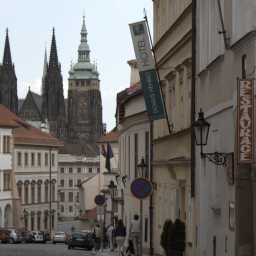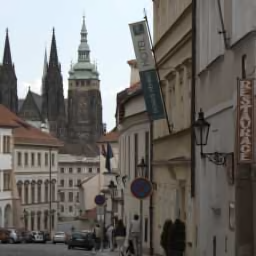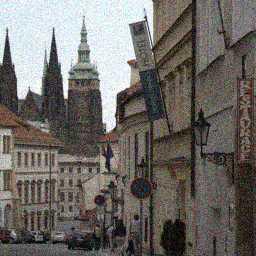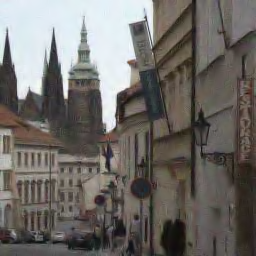Fast Bayesian JPEG decompression and denoising with tight frame priors
This web page describes our results in the area of image reconstruction of images compressed by JPEG. They were published in two papers.
- M. Šorel, M. Bartoš, "Efficient JPEG decompression by the alternating direction method of multipliers," ICPR, 2016
This conference paper describes the application of the alternating direction method of multipliers (ADMM) to the problem of JPEG decompression in the Bayesian MAP formulation with priors given by the l1 norm of a tight frame operator. We provide all the necessary math including the proof of an expression for the projection on the quantization constraint set. Convergence is extremely fast and given the speed of the method, results are competitive with other state-of-the-art methods. Some recent methods based on neural networks preserve slightly more details but can hardly compete in speed. - M. Šorel and M. Bartoš, "Fast Bayesian JPEG Decompression and Denoising With Tight Frame Priors," in IEEE Transactions on Image Processing, vol. 26, no. 1, pp. 490-501, Jan. 2017. doi: 10.1109/TIP.2016.2627802
This paper provides a more detailed analysis of the MAP formulation of JPEG decompression with priors given by the l1 norm of a tight frame operator. Important difference with respect to the conference paper is that it considers a noise added in the image before compression. In other words, we consider the situation of an image degraded by a noise and then compressed by the JPEG algorithm. The task is to recover the original image by maximizing the posterior probability using the same priors we use in the JPEG decompression. We show that this formulation achieves reconstruction quality impossible by denoising or JPEG decompression alone, see examples bellow. We also show that using Gaussian approximation instead of the hard quantization constrain set surprisingly improves results. We derive how this (different) formulation can be efficiently optimized by the ADMM.
Matlab code is available on GitHub.
The first example uses the version of the algorithm with the Gaussian approximation of the quantization constraint set (QCS) and DT-CWT regularizers as described in the TIP paper (2nd reference). Results with the exact QCS as described in the conference paper would be very similar. The image on the left is compressed by JPEG with quality 50 and the restored image is on the right.


Another example shows the reconstruction of a noisy image compressed by JPEG. The top left image is the original. The top right image is degraded by an additive Gaussian noise with σ=20. JPEG-compressed image with quality 50 is on the bottom left and the result of the proposed algorithm (2nd reference) on the bottom right.




